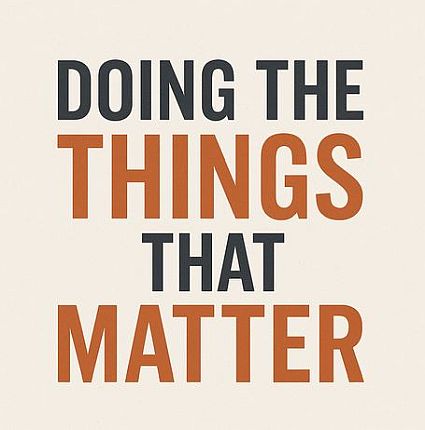We’ve been conditioned to think that productivity is driven by doing more things. We focus on scaling those things. Whether it’s more outreach, more prospecting, more meetings, more demos, more proposals, more pipeline.
To do more, we look at tools, methods, hacks, that help us do more things. We add to our tech stacks. We hire more people.
We discover new things like, LinkedIn prospecting and other social engagement, that create new things for us to do. AI is the latest, certainly not the last thing to add to the pile of doing more things.
Scaling has become the underlying principle driving us to do more things.
But what happens when doing more things isn’t producing more?
Sometimes, it seems like we are running on a treadmill, we are going faster, working harder, burning more energy–but we aren’t going anywhere. We are working harder than ever before, we are going faster, but still struggling to keep up. Our people are exhausted, our pipelines are bloated, our budgets are stretched. Despite all these things, revenue isn’t moving proportionately to the efforts we are putting in.
The problem isn’t necessarily laziness or effort. It’s not that we aren’t investing in tools, training, programs, to help our people do more. It may not even be the execution of those things. The problem is what we’ve chosen to optimize.
We focus on volume rather than value, activity over impact, efficiency over effectiveness, persuasion over building trust.
What if we turn all of this upside down. What if rather than focusing on “doing more things,” we started “doing the things that matter?”
How do we figure this out? How do we begin to understand what matters?
While it seems obvious, somehow, we’ve neglected it, but some thoughts.
Are we talking to the right customers, rather than talking to more customers. We’ve found the best way to improve win rates is through a vicious focus on our ICP. But too, often, we do exactly the opposite.
Are we talking to our customers about what matters to them, in ways they understand and have impact? Rather than focus on our products and customer lists, are we helping them identify and address the things that stand in the way of their success? Are we building understanding, confidence? Are we helping them learn and navigate their their problem/change process? Are we helping them make better decisions, not just on making our month end goals? Are we using their time well, or focused only on our time? Are we creating a long lasting partnership, or focused on the transaction.
With our own people, rather than focusing on doing more things, how do we focus on doing things that matter?
What if rather than scaling up, doing more, we “scaled down,” focusing on fewer but higher value activities. What if we started helping them have more meaningful conversations with their customers? What if we had more meaningful conversations with them? What if we understood what is important to them–their development and growth, being heard and recognized, being part of something important to them?
And within our own organizations, rather than focusing on our own roles, what if we started focusing on what matters to the organization? How we work more effectively together, rather than being obsessed with our own goals/metrics? What if we focused on alignment and trust within our own teams and organizations?
Shifting from “doing more things,” to “doing things that matter more,” means:
- Helping our customers make better decisions.
- Helping our people do their best work.
- Helping our organizations move with purpose.
- Across everything, building trust, clarity, impact, meaning.
Doing more things isn’t working. It’s time to focus on doing what matters more.
Afterword: Here is the AI generated discussion of this post. Enjoy!

As a Salesperson, I was paid 1% on order, 1% Delivery, then 1% on Payment.
I had to build a Pipeline for Orders, Revenue, and Cash
That meant I had to Manage my Time, and my Focus, on what mattered.
It is unusual to see this level of attention today.
I blame the Movie ‘Build it and they’ll come’, truly a “Field of Dreams.”
but that’s just me.